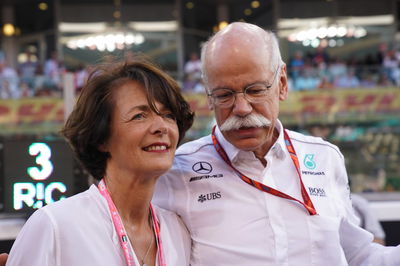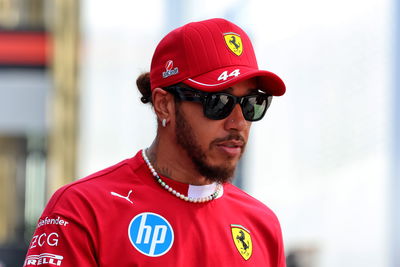Who's winning the early F1 development war?
The opening race of the new season is the first time we get to explore what the Formula 1 teams have got up to over the winter period with their cars. Although a lot can be garnered from winter testing – particularly the aerodynamic assets of the cars – a lot less is understood about everyone’s fundamental concepts regarding suspension, internal packaging and cooling.
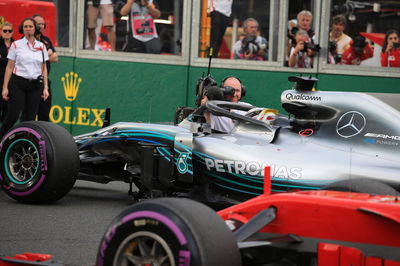
The opening race of the new season is the first time we get to explore what the Formula 1 teams have got up to over the winter period with their cars. Although a lot can be garnered from winter testing – particularly the aerodynamic assets of the cars – a lot less is understood about everyone’s fundamental concepts regarding suspension, internal packaging and cooling.
With the privacy walls no longer allowed and the photographers let loose in the pitlane, over the course of the next few months we can really start to discover what’s good and what’s not so good about the class of 2018.
Mercedes
There is an air of confidence about Mercedes heading into this event, which is affirmed by their lack of visual updates to the W09 and Lewis Hamilton’s lap record pole position in qualifying for the Australian Grand Prix. However we did get to see some glimpses of how the team have developed the car in a few key areas when it was stripped down in the garage.
Technical chief James Allison stated over the winter that they have gained about two tenths of a second by shrinking the sidepod bodywork down further around the internals. There is a lot of time to be found in clearing as much space as possible around the floor – less surface area induces less drag on the car – while reducing blockage allows the air to flow freely towards critical aerodynamic devices such as the rear wing and diffuser.
Tightening the bodywork is a huge task from a thermal management perspective as the power unit and its ancillaries must be kept as cool as possible. Equally, if optimal cooling can be achieved then the orientation of these ancillaries must be such that the bodywork isn’t burnt.
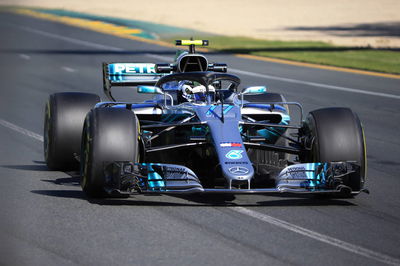
From early photos of the W09 it is clear that a lot of emphasis has gone into the geometry of the exhaust headers, entwining around each other as they snake towards the turbocharger’s turbine at the back of the engine. To allow the designers to pinch the bodywork the headers bend steeply upwards from the bottom of the engine, tucking right underneath the cylinder heads rather than flaring out and over them.
This has required a complete redesign of each header to retain the same power output as before (or even perhaps to produce more power), while further space has been saved by wrapping each header in thermal protection instead of one bulkier cover.
Red Bull
Having launched the RB14 earlier than they would normally it was hardly surprising to see Red Bull bring a few new extra bits to polish off a car that has looked impressive in testing. Over the winter the team had to add and reinforce several supports for the complex array of baffles around the slim sidepod inlet having misjudged the load levels on them slightly – a tidier solution is now on the car in Melbourne, reducing clutter to ensure maximum aerodynamic efficiency in the area.
Red Bull have also used their intricate bodywork to advance the wing mirror design, which is already a neat interpretation of the rules. We have spoken a lot about the Ferrari sidepod design which utilises a low slung side impact spar, forming a prominent leading edge ahead of the sidepod inlet that drives airflow downwards and along the floor.
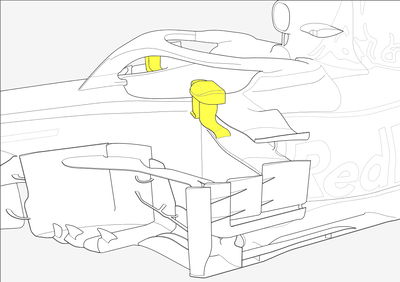
This shelfed bodywork is where Red Bull have chosen to branch one of their new mirror supports from, the other is dog-legged and attaches to the cockpit side. As the mirror itself doesn’t appear to be repositioned, so this tweak is more about directing the air over the bodywork behind as cleanly as possible rather than altering the mirror’s wake.
Force India
Developing an all-new chassis over the winter to accommodate the challenges of the Halo has hampered Force India’s early season package. The team openly admit they are a bit behind on the development curve but, as promised, a host of new bits arrived for Australia.
Furthering their concept from last year, a triple array of baffles flank the VJM11’s sidepods to shield the car from the front tyre’s turbulent wake as the wheels are turned. In addition, the bulbous sidepods have been replaced by more slender bodywork that tapers nicely towards the rear of the car. The team examined the effects this had on the airflow during Friday practice by dousing the bodywork in Flow Visualisation (or Flo-Viz) paraffin-based fluorescent paint, highlighting (quite literally) how the flow winds its way towards the top of the diffuser at the back.
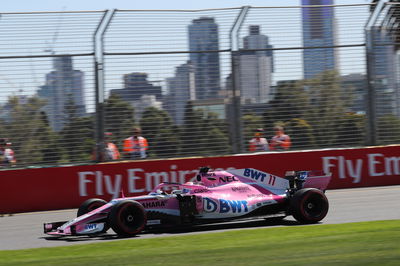
Around a revised rear wing were a few more little details, including a lower T-wing and a small winglet installed above the exhaust. The FIA have clamped down quite hard on this area of the car but there still appear to be some gains to be had by influencing the exhaust plume and general flow underneath the rear wing.
On the eve of the opening F1 round the in-season development race is well underway.
